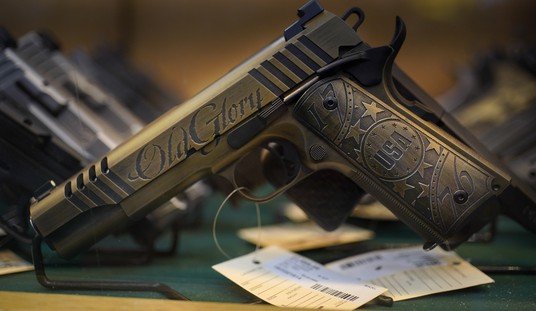The bore of a gun barrel with conventional rifling is etched with corkscrew-like cuts. Each cut, or groove, is separated by a ridge of metal called the land. Together, these grooves and lands define the type of rifling inside the bore. The height, width, and number of lands will vary by manufacturer, though most handgun bores have about six lands. All conventional rifling is formed by cutting or exerting pressure within the barrel, unlike polygonal rifling which is formed by hammering the barrel from the outside.
The word "polygonal" refers to having many sides and angles and is used to describe bores with unconventional rifling. While the lands of conventional rifling look somewhat like the angular teeth on a gearwheel, those of polygonal rifling look more like bulges rising from the bore. Polygonal rifling was an outgrowth of a cold-hammer forging process developed by German engineers prior to the Second World War. The process addressed the need to produce more durable machine gun barrels in less time than those produced with traditional methods. Current manufacturers whose handgun barrels have hammer-forged polygonal rifling include Glock, Kahr, Magnum Research, and Heckler & Koch.
The advantages of barrels with polygonal rifling include a smaller gap between bullet and bore, leading to slightly higher bullet velocities, and smoother bores that accumulate less fouling, making them easier to clean. The barrels are also generally more accurate because there is less bullet deformation by the "grooves" (less "bite" into the bullet) and because the bore’s surface is formed with more consistency. Because the rifling has no sharp corners to erode, barrels with polygonal bores have a longer, usable life, since they retain their accuracy longer. Finally, the hammer forging process used to create barrels with polygonal rifling is less likely to leave traverse tool marks, another cause of fouling, and a problem more common in conventionally rifled barrels. Accuracy, longevity, and strength may be the greatest practical benefits of barrels with polygonal rifling. A limitation is their inability to be safely used with lead bullets.
To understand why it’s generally not a good ideal to shoot non-jacketed lead bullets out of barrels with polygonal rifling, it’s first necessary to understand how a bullet passes down the bore. All bullets are slightly larger in diameter than their nominal caliber, which is defined as the distance between opposing lands. The bullets are larger in order to provide the "extra" metal that gets squeezed into the rifling by the propellant’s expanding gases as the bullet travels down the bore; this extra metal fills in the grooves to provide a purchase for the rifling, thus allowing it to spin the bullet down the bore. Conventional rifling, developed when lead bullets were the norm and muzzle velocities somewhat lower, has grooves deep enough to accommodate the buildup of lead deposits caused by the friction between bore and bullet. Regular cleaning removes the deposits before they become constrictive.
However, because more of the bullet’s bearing surface is in contact with the bore in polygonally rifled barrels, lead bullets, especially when pushed at high velocities, are literally squirted down the barrel, "smearing" the bore with a lead veneer. As this veneer builds up and fills in the gap that normally exists between the bore and bullet, it causes pressure from the expanding gases (now less able to pass through the gap) to increase dangerously. This is not a problem with jacketed bullets because the jacket material is a copper alloy that’s much harder than lead and resists shedding.
In fact, the ability to use cartridges with non-jacketed lead bullets may be the greatest practical benefit of conventionally rifled barrels. If ammo is scarce and you can only buy or barter for cartridges with lead bullets, or you’re a reloader who uses lead bullets to keep costs down, conventional rifling is an asset. Also, conventionally rifled barrels made of stainless steel, or that have been chemically hardened or plated with hard chrome, will have good usable barrel life.
Nevertheless, cold-hammer forged barrels with polygonal rifling are more durable, stronger, easier to clean, and retain their accuracy much longer than any other barrel. And, in a pinch, you can even shoot lead bullets through them, just not too many between cleanings. But since most cartridges for target and self-defense have jacketed bullets, this "limitation" of polygonal rifling is mostly theoretical. And the problem can be avoided entirely by purchasing a conventionally-rifled replacement barrel.
For someone whose practice regimen is an occasional trip to the range, the type of rifling doesn’t matter since they will never shoot enough rounds to affect the accuracy of their weapon. But, for those who practice frequently, or who plan to compete in practical shooting matches such as IDPA or IPSC, a hammer-forged barrel with polygonal rifling will last longer with less maintenance.
Note from the Editor:
Thanks to the United States Concealed Carry Association for this important article. To stay informed about concealed carry please click here for their free newsletter The Armed American.








Join the conversation as a VIP Member